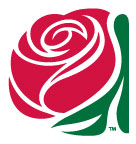An Open Artists’ Discussion on Creation, Technique & Opportunity
Jan Wilson- DKG New Jersey
Moulin Rouge- Jan Wilson Door: Washington Irving’s Home
Briefly, tell me a little bit about yourself as an educator and as an artist?
Art has always been my passion. As an educator I have always used the arts and especially visual art as a vehicle to promote original thought, to provide students with opportunity for personal expression, as a way to educate about where we’ve been, who we are as individuals and members of groups and where we are going.
As an artist, where do you find your inspiration? Do you search for a particular subject or scene or just have the camera ready as a digital notebook?
The camera on my iPhone is always ready. For the last ten or so years, I have been most interested in capturing a moment in time. A bird raising a wing to take flight, the way light hits a window or a door or changing something we pass by into something extraordinary. That was the case of a painting of the marquise of the Moulin Rouge or a window in the home of Washington Irving.
When you start framing your subject, is there a process that goes through your mind? As an example, your digital painting...and the one that comes to my mind is 'Moulin Rouge in Paris' also featured in The Collegial Exchange. How many photographs did you shoot and what kind of notes did you take before you settled on one?
Most often it is only one or two shots of an image. Once I get home to my desktop computer and large screen, I move the image around, enlarge, enlarge, enlarge and usually then paint only a piece of the original image. Sometimes the enlargement really surprises me and I end up seeing something that the camera caught that I missed when looking directly at the image itself.
Your other entry, ‘Window of The Home of Washington Irving’. Does this creative style transcend into your other pieces in sculpture and traditional painting?
I abandoned sculpture quite a while ago because it became cost prohibitive. Once I started painting on the computer, I stopped traditional painting all together. Painting digitally, if I don’t like something, perhaps a color or brushstroke I just correct or delete and move on. Technology has become so sophisticated that I can print very large images without any loss of detail or clarity.
What digital program did you use to create these and what are you currently using?
Hmmm, there are so many programs by companies such as Adobe and Corel and so many more. I use multiple programs and work back and forth among them. It is best to do a search to determine what will work for you. Some of the programs have a steep learning curve.
What is the difference between digital painting & just applying a filter to alter an image?
It is true that there are apps that with one stroke manipulate a photo into a painted style and there are programs that will do similar things by selecting an “auto” mode. There is much more to digital painting! Using a stylus and drawing tablet attached to your computer, the stylus becomes your blank sheet. Technology has become very sophisticated. You can purchase brushes that approximate physical brushes. You can adjust the number of bristles on the brush, the amount of paint that the brush holds, the opacity of the color being applied.
Digital painting allows you to create editions. There are professional printing companies that provide opportunities to have your work printed on high quality art papers, glass, metal, fabric and much more.
You can build layers on the computer much the same way you layer paint on paper or canvas. For me, the beauty is that if I place a stroke on the tablet or screen and don’t like it, I hit delete and move on.
Do you have any tips for other artists’ looking to expand their repertoire?
If you are thinking of beginning to paint digitally, before you do, look at some YouTube videos to see what is involved. There are great tutorials, information on technology such as digital paint programs, drawing tablets, pens and digital brushes.
Have you entered your work in other competitions?
I was looking at gallery opportunities when the pandemic hit and that ended that. I have recently moved to South Carolina. The town where I live has a vibrant art community and I plan on exhibiting as opportunities open.
Jan Wilson















